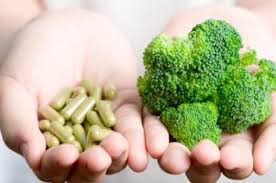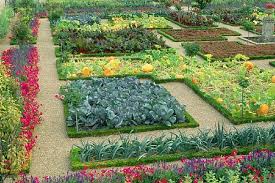Archive | August 2017
QUOTE FOR WEDNESDAY:
“The most common symptom of breast cancer is a new lump or mass, but other symptoms are also possible. It’s important to have any breast change checked by a health care provider.”
American Cancer Society
QUOTE FOR TUESDAY:
“Some human cells, including cancer cells, divide with a 24-hour rhythm. One of the main human circadian rhythm genes, cryptochrome, has been associated with diabetes and depression. Both of these discoveries grew from work with plants.”
Dr. Steven Kay (Biologist at the University of California)
QUOTE FOR MONDAY:
“You probably already knew that plants were the original medicines that people would use when they were sick. Did you know that we still use them today to come up with new cures for illnesses”
Norfolk Botanical Gardens
Part III How plants enhance our lives!
6. Food!
Another way that plants are so beneficial is that they are an abundant diverse, and arguably the most important food source! A wide range of fruits and veggies are provided by incredible plants, providing a significant amount of our fibre intake. Fibre is vital for maintaining a healthy digestive system and feeding our microbiome .
7. Provide Medicines
As well as food, plants provide us with our original medicines. These natural sources of medicine are something that we, as Natural Health Practitioners, still utilise today because of their incredible potential, wide range of applications and proven effectiveness. In 2002, a study stated that ‘Plants are arguably poised for a comeback as sources of human health products’ and we are consistently finding that to be true.
8. Improve Soil and Water Quality
Some plants can act as filters in the water, filtering out toxins, bugs and added pollutants to keep the water clean. Some plants can do the same in the soil; those with a compost bin for ‘recycling’ plants scraps can support this! Putting veggie scraps back into the garden can cause growing plants to thrive by providing essential nutrients and environments for beneficial microorganisms.
9. Act as Protection
Plants are incredible useful for protection, of us and animals. All different parts of plants can provide habitats and homes for many animal species, which is why it’s important to be mindful of how plants are sourced and utilised, we don’t want to be taking away homes!
Plants also provide a large quantity of our building supplies and the shade provided from trees protects humans from harmful UV radiation, as well as from the weather!
10. Moderating Temperature
Plants have a significant impact on moderating temperatures. Indoors, it is thought that plants can reduce heating and cooling costs due to this incredible ability. While outdoors, one study showed that plants like solitary trees, clumps of trees and vines had the ability to reduce surface temperature on buildings in urban environments (7). This is also important to remember as we tackle tough issues like climate change… maybe a few more indoor plants could cool down your home instead of the air conditioner.
Norfolk Botanical Garden (http://norfolkbotanicalgarden.org/education/online-resources/power-plants/plants-people) states the following about how plants enhance our lives:
Natural Resources
Plants are one of our most valuable natural resources. Why? Without plants there would be no life on earth! It’s a good thing we have plants and plenty of them. We’d like to show you some of the ways that plants affect your daily life.
Plants Clean the Air: Take a deep breath. Plants recycle the carbon dioxide that we give off and turn it into oxygen that we need in order to breathe. Do you have any plants inside your house? Plants kept indoors can help purify the air and smell better than a fake air freshener. Save some money, buy a plant instead!
 Plants Are Our Food: Plants are not only food for animals but they are our food too! What did you have for breakfast this morning? Unless you decided to skip breakfast there was probably at least one plant somewhere in there. There are grains in cereal, or maybe you drank orange juice, either way you are using plants! What about your other meals? Maybe there are apple slices in your lunch, sweet pineapple on your sundae or french fries from the cafeteria, all of these come from plants.
Plants Are Our Food: Plants are not only food for animals but they are our food too! What did you have for breakfast this morning? Unless you decided to skip breakfast there was probably at least one plant somewhere in there. There are grains in cereal, or maybe you drank orange juice, either way you are using plants! What about your other meals? Maybe there are apple slices in your lunch, sweet pineapple on your sundae or french fries from the cafeteria, all of these come from plants.
Do you like tangy barbeque? How about spicy pizza? You can thank plants for that tasty boost. Now that should give you something to chew on for a while!
One of your food colorings comes from a tree. During WWII there was a shortage of butter, so people would have to use margarine. In order to make the plain white margarine look more like real butter the companies would include a small packet of dye that your family could mix into the margarine and make it turn yellow. That dye came from the Annatto tree.
Plants Become Shelter: Did you know that every building that you see around you has been constructed using wood from trees? Whether wood is hiding on the inside of the walls or very obvious on the outside, trees are part of your shelter. What about the furniture that you sit on? Do you have a wooden bed? Tonight when you get into bed look at the tag on your bed sheets. Are they made of cotton? How about the clothes you are wearing? Cotton shirts, cotton blue jeans and cotton socks are just a few of the important things in your life that come from plants.
Plants Are Used For Medicine: You probably already knew that plants were the original medicines that people would use when they were sick. Did you know that we still use them today to come up with new cures for illnesses? Just the smell of some plants can make you feel better. Have you ever used a special cream to help you breathe when you’re feeling stuffy? It was probably mint or eucalyptus that helped you breathe a little easier. Do you know anyone that likes to wear perfume? Wonderful scents come from all kinds of wood, grasses, flowers and even roots.
We use plants in so many different parts of our lives.
References For 6-10.
- Relf, PD & Lohr, VI 2003, ‘Human issues in Horticulture’, Horticultural Science, vol. 38, no. 5, pp. 984-993
- Rowe, DB 2011, ‘Green roofs as a means of pollution abatement’, Environmental Pollution, vol. 159, no. 8-9, pp. 2100-2110
- Victorian Government 2016, ‘Fibre in Food’, Better Health Channel, <https://www.betterhealth.vic.gov.au/health/healthyliving/fibre-in-food>
- Raskin, I, Ribnicky, DM, Komarnytsky, S, Ilic, N et al. 2002, ‘Plants and human health in the twenty-first century’, Trends in Biotechnology, vol. 20, no. 12, pp. 522-531.
- Arvidson, K 2016, ‘Biodiversity, Nature and Human Health’, Natural Medicine Journal, vol. 8, no. 10, n.p.
- Organic gardening Tips 2012, ‘Improving Soil Quality’, Organic Gardening Tips, <http://www.organicgardeningtips.info/improving-soil-quality/>
Millward, AA, Torchia, M, Laursen, AE & Rothman, LD 2014, ‘Vegetation placement for summer built surface temperature moderation in an urban microclimate’, Environmental Management, vol. 53, no. 6, pp. 1043-1057.
QUOTE FOR THE WEEKEND:
“As we outlined in a previous blog post, having plants in your office can bring countless health benefits. This is because not only do they reduce dust, mold and bacteria levels (which can trigger allergies and make symptoms worse), but they can also boost concentration and improve your mood and morale.”
Greenleaf.com
Part II How plants can enhance our lives!
Even if we’re not big fans of the “getting in touch with nature” idea, it’s hard to argue against plants brightening up our homes and places of work. What’s interesting is that there’s a growing body of evidence that plants can actually improve our health in significant and specific ways. Here are five reasons to put plants back into our living and work spaces.
1. Plants Can Improve Our Productivity
New research from a team at the University of Exeter in the UK finds that, while stripping our offices of unneeded furnishings might be beneficial, keeping plants in the office to create so-called green spaces can boost worker productivity by as much as 15 percent. The reasons for this aren’t certain but plants appear to improve general well being, something that’s been established by other research, and also might help people to better engage with their environment — obviously, a more engaged worker will probably be more focused and efficient.
2. A Pot Plant in Our Homes Can Improve Our Mood and Lower Anxiety
3. Indoor Plants Improve Our Air Quality
NASA research shows that having plants indoors can help to improve air and water quality in our living spaces. That research was done on sealed units but there is some evidence that this translates to normal houses and buildings, at least to some degree. Obviously, for people with asthma and other breathing conditions this would be important, but for the rest of us cleaner air can also affect us in positive ways, such as improving the quality of our sleep.
Through a process known as photosynthesis, plants create their own food by absorbing carbon dioxide (the bad stuff we breathe out) from the atmosphere and then transforms it into oxygen, whilst simultaneously creating their own food source! How self-sufficient!
This oxygen then becomes the air we breathe, and so the cycle continues. Without an abundance of plants, oxygen concentration in the air around us drops, and we don’t receive our daily requirements!
Plants not only provide us with oxygen but also have the ability to remove pollutants from the air. Research has indicated that certain types of plants have the ability to reduce nasty pollutants like formaldehyde, toluene and benzene. For this reason, ‘green roofs’, which involves growing plants and greenery on rooftops, are being investigated as a possible future tool to help alleviate the negative effects of air pollution.
4. Plants Can Reduce Stress for People Recovering from Illness
Hospital stays can be very stressful, but Dutch researchers have found that one way of helping patients feel more relaxed is to incorporate unobtrusive plants into their hospital rooms. The researchers found that plants are particularly good at improving the perceived attractiveness of a room and that this, it seems, can help improve the patient’s hospital stay experience. Other research has also indicated a similar, wellbeing boosting effect, possibly down to what is known as biophilia, an hypothesis that we have a natural inclination towards greener, plant-filled spaces.
5. Caring for Plants Can Improve Our Quality of Life
Research published in the journal Hort Technology showed that when senior citizens living in low-income assisted-living facilities had plants to care for and cultivate, they were more likely to self-report better health than those who didn’t have plants to look after. The reasons for this marked upturn in positive health perceptions appears to be that the plants give the elderly something to care for and thus a sense of being needed, things that they might not have experienced very much in their later years. Renewing this sense of responsibility and purpose led to improved well being which, while perhaps not improving physical ailments, may give a new perspective and more resilience.
References
- Relf, PD & Lohr, VI 2003, ‘Human issues in Horticulture’, Horticultural Science, vol. 38, no. 5, pp. 984-993
- Rowe, DB 2011, ‘Green roofs as a means of pollution abatement’, Environmental Pollution, vol. 159, no. 8-9, pp. 2100-2110
- Victorian Government 2016, ‘Fibre in Food’, Better Health Channel, <https://www.betterhealth.vic.gov.au/health/healthyliving/fibre-in-food>
- Raskin, I, Ribnicky, DM, Komarnytsky, S, Ilic, N et al. 2002, ‘Plants and human health in the twenty-first century’, Trends in Biotechnology, vol. 20, no. 12, pp. 522-531.
- Arvidson, K 2016, ‘Biodiversity, Nature and Human Health’, Natural Medicine Journal, vol. 8, no. 10, n.p.
- Organic gardening Tips 2012, ‘Improving Soil Quality’, Organic Gardening Tips, <http://www.organicgardeningtips.info/improving-soil-quality/>
QUOTE FOR FRIDAY:
“We humans are still learning and re-learning how to harness the self healing ability of plants, in order to enhance or rebalance the health of our own body, mind and spirit. The more we learn about plants the more we find ways to use them to support health.”
NYNATURALNEWS.com
QUOTE FOR THURSDAY:
“The major source of lead poisoning among U.S. children is lead-based paint and dust with lead.”
MAYO CLINIC
QUOTE FOR WEDNESDAY:
“Anorexia nervosa and bulimia nervosa are serious psychiatric illnesses related to disordered eating and distorted body images. They both have significant medical complications associated with the weight loss and malnutrition.”
Science Direct


